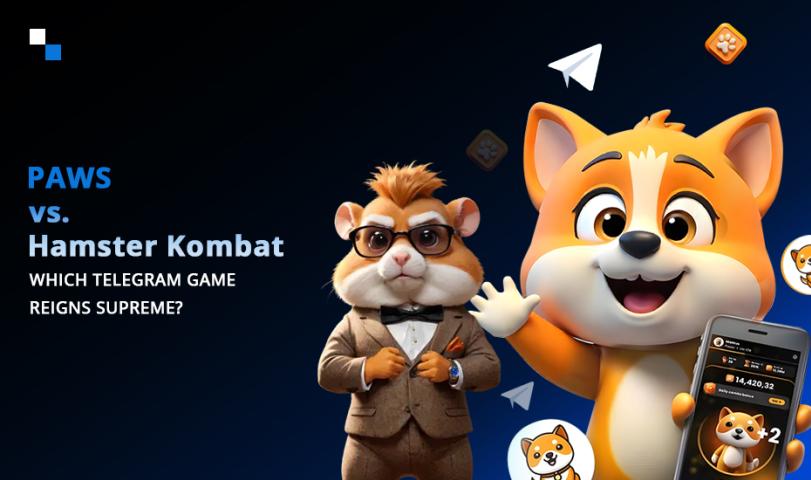Telegram is more than just a messaging platform. It’s evolving into a hub for mini-games, providing users with entertainment without needing to leave the app. Telegram mini-games are simple, interactive, and highly engaging. Developers are taking advantage of this platform to create games that run seamlessly. But what technologies power these games? What makes them work smoothly within Telegram?
This article will cover the main technologies used in Telegram mini-games development, from coding languages to APIs and game engines.
Top Technologies Used in Telegram Mini Games Development
Discover the key technologies used in Telegram mini games development, including JavaScript, HTML5, APIs, and game frameworks for smooth gameplay.
JavaScript: The Core Language
JavaScript plays a vital role in developing Telegram mini-games. It's a widely used language for web development and is highly adaptable. For mini-games, JavaScript ensures the games can run efficiently within Telegram’s web environment.
JavaScript's flexibility allows developers to create interactive elements like animations, character movements, and game dynamics. The ease of integration makes it a go-to language for developers working on Telegram mini-games.
Why JavaScript?
- It's browser-compatible, meaning Telegram's web version supports it without issue.
- Its ability to handle asynchronous processes allows for smooth gameplay.
- JavaScript works well with the other technologies used, including APIs and engines.
HTML5 and CSS3: Building the Game Interface
HTML5 is the backbone for structuring the content of Telegram mini-games. CSS3, meanwhile, enhances the visual appeal. While HTML5 lays down the framework of a game, CSS3 makes it look good.
These technologies are essential because Telegram mini-games require a lightweight and responsive design. HTML5 and CSS3 deliver just that. They help ensure that games load quickly and perform well on both desktop and mobile versions of Telegram.
Benefits of HTML5 and CSS3
- Games are responsive, so they adapt to different screen sizes.
- These languages reduce the need for additional plugins or software to play games.
- Combined, they create a user-friendly experience, which is essential for mini-games.
Node.js: The Server-Side Engine
Node.js plays a crucial role in the back-end development of Telegram mini-games. It's a server-side platform that allows developers to build scalable network applications. Many Telegram games require server-client interaction, and Node.js facilitates this.
For example, in multiplayer mini-games, the server handles game data, while Node.js ensures the communication between the server and the players runs smoothly.
Why Node.js?
- Its asynchronous nature makes it ideal for handling multiple players simultaneously.
- It’s lightweight, which is perfect for Telegram mini-games that need to be fast.
- Node.js works hand-in-hand with JavaScript, making development more streamlined.
Telegram Bot API: The Connection to Telegram
Telegram mini-games are often integrated with bots. Telegram provides a Bot API that enables developers to create bots that interact with users. In gaming, bots manage game sessions, keep track of scores, and communicate with players.
For instance, a bot might start a new game when a user types a command, or it could provide updates about the player's performance during the game.
Why Telegram Bot API?
- It allows real-time interaction with players.
- Bots manage user input, making the gaming experience more interactive.
- The API is highly flexible, making it easy to add features or integrate with other services.
WebSockets: Real-Time Communication
Real-time interaction is key for any game, and Telegram mini-games are no exception. WebSockets are used for real-time communication between the game server and the players. Unlike traditional HTTP, WebSockets provide a two-way communication channel, which is crucial for real-time multiplayer games.
WebSockets enable players to see instant results, such as updated scores, moves made by opponents, or any in-game changes. This technology is lightweight and allows for low-latency communication.
Benefits of WebSockets
- Real-time communication is essential for multiplayer games.
- WebSockets use less bandwidth, improving game speed.
- It helps synchronize game states between players instantly.
Canvas API: Creating Graphics
The Canvas API is part of HTML5 and is commonly used in Telegram mini-games to draw graphics. Whether it’s creating characters, game objects, or animations, Canvas provides the tools needed to make the game visually appealing.
Developers can create 2D game environments directly on a webpage using the Canvas API, making it an efficient solution for Telegram mini-games that need to load fast but still look good.
Why Use the Canvas API?
- It’s fast, allowing for smooth animations and real-time updates.
- It integrates well with JavaScript, which is often used to control the game logic.
- The Canvas API provides high flexibility in creating dynamic content.
Phaser: The 2D Game Framework
Many Telegram mini-games are built using Phaser, a popular 2D game development framework. Phaser allows developers to create fast and responsive games with minimal coding. It’s often used in combination with JavaScript and HTML5 to create visually engaging and interactive mini-games.
Phaser provides built-in physics, animation, and input handling, making it easier to build games without starting from scratch. It’s a great tool for developers who want to quickly develop Telegram mini-games.
Benefits of Phaser
- It comes with a variety of built-in tools, speeding up development time.
- Phaser allows for both desktop and mobile game development.
- It supports multiple platforms, making games accessible to a broader audience.
MongoDB: Storing Game Data
Many Telegram mini-games store user data, scores, and progress. MongoDB, a NoSQL database, is widely used for this purpose. It stores data in JSON-like documents, making it easy to manage and retrieve when needed.
For example, when players resume a game or check their progress, MongoDB fetches the data and sends it to the Telegram bot or game engine.
Why MongoDB?
- It’s highly scalable, perfect for games with many users.
- Its JSON-like structure works well with JavaScript, making data management simpler.
- MongoDB allows for fast data retrieval, crucial for real-time games.
Game Analytics Tools
To improve user engagement, developers need insights into how players are interacting with Telegram mini-games. Analytics tools provide valuable data such as playtime, user behavior, and session length. These insights help developers optimize games for better performance and user satisfaction.
By understanding which parts of the game users enjoy the most, developers can refine those elements or create similar features in future updates.
How Analytics Tools Help
- They provide insights into user engagement and retention.
- Analytics helps in spotting game bugs or performance issues.
- Developers can adjust difficulty levels based on real data.
Version Control (Git): Managing Code
Git is a version control system that’s essential for managing the codebase of Telegram mini-games. Developers use Git to track changes, collaborate with team members, and maintain multiple versions of the game. This helps in ensuring that bugs can be tracked and fixed easily.
Why Use Git?
- It allows multiple developers to work on the same project without conflicts.
- Git helps keep a history of changes, which is crucial for large-scale projects.
- It simplifies the process of reverting to previous versions if a problem arises.
Cloud Services (AWS, Heroku): Hosting and Scaling
Many Telegram mini-games require backend servers to manage gameplay, user data, and interactions. Cloud services like AWS or Heroku are commonly used for this purpose. These platforms provide the infrastructure needed to host the game, manage databases, and scale the server as user demand grows.
Cloud services also offer high availability, which is crucial for ensuring that games run smoothly without downtime.
Why Cloud Services?
- They allow for easy scaling as the game grows in popularity.
- Cloud services offer tools for data storage, user management, and security.
- They reduce the complexity of server management, allowing developers to focus on game development.
Security Tools: Keeping Data Safe
Security is a critical concern in any online game. Telegram mini-games require security measures to protect user data, prevent cheating, and ensure that gameplay is fair. Security tools are often used to encrypt data, prevent attacks, and verify user identities.
For example, encryption ensures that sensitive user data, like scores and progress, is safe from hackers.
Importance of Security Tools
- They protect user data, which is especially important for multiplayer games.
- Security tools prevent cheating, ensuring a fair gaming environment.
- They help avoid downtime caused by attacks, ensuring that games run smoothly.
Conclusion
The technologies involved in Telegram mini-game development are diverse, each playing a critical role in creating smooth and engaging gaming experiences. From JavaScript and HTML5 for building the interface to Node.js for managing the backend, these tools ensure seamless gameplay. Game frameworks like Phaser simplify development, while APIs such as the Telegram Bot API enable direct interaction with users. Cloud services like AWS help with scalability, and security tools ensure user data and gameplay remain secure.
For businesses or developers looking to dive into this growing market, working with a Telegram Mini Game Development Company can make the process more efficient. These companies understand the technologies required and can deliver high-quality games that meet the expectations of players. With the right technologies and expert guidance, the possibilities for Telegram mini-games are endless, offering entertainment for millions of users across the platform.











